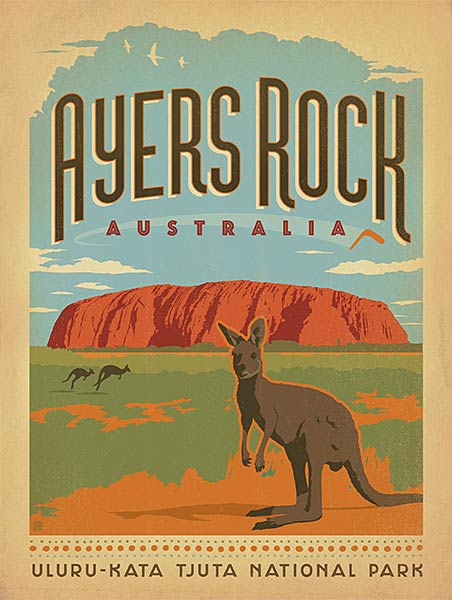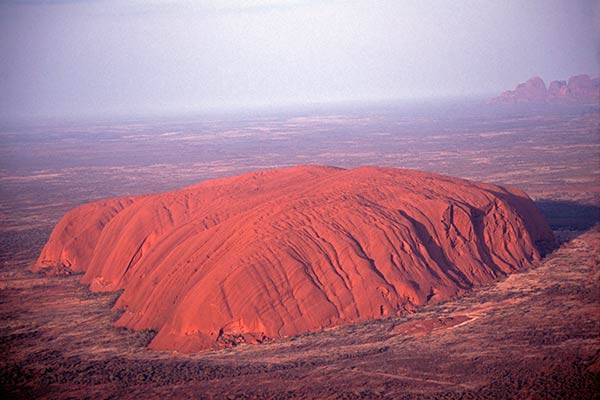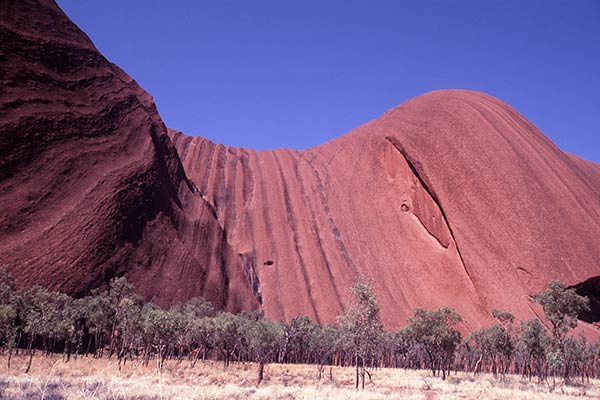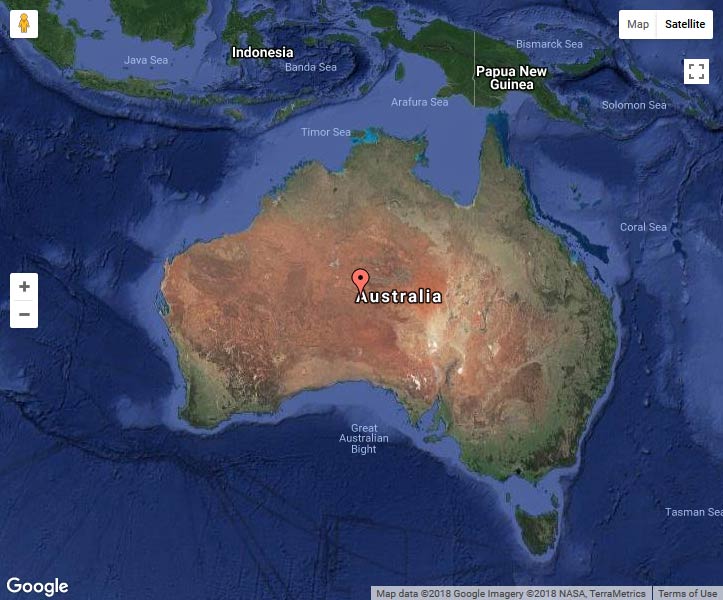
Uluru Location
-
Uluru, also known as Ayers Rock, is located in the geographic center of Australia, in the southwestern part of the Northern Territory.
-
Uluru lies west of the Simpson Desert, about 208 miles (335 km) southwest of Alice Springs (as the bird flies) and 288 miles (463 km) by road.
-
The massive rock formations of Uluru and nearby Kata Tjuta (the Olgas) are the most prominent and well-known sacred sites of the Aboriginal people. Contrary to popular belief, Uluru is not the largest monolith in the world; Mount Augustus in Western Australia has that distinction.
Facts About Uluru
-
In the language of the local Anangu Aborigines, Uluru is a family name that is applied to both the rock and the waterhole on top of the rock. The Anangu people belong to the Pitjantjatjara and Yankunytjatjara tribes and are the traditional owners of Uluru.
-
Uluru is an inselberg, which is a geological term for an isolated hill or mountain rising abruptly from a plain. It is composed of Arkose Sandstone; a sedimentary rock composed of 50% Feldspar, 30% Quartz, plus Mica, Calcite and other minerals. The sandstone rock of Uluru is actually gray but the surface oxidation of its iron content gives it a striking orange-red hue. Uluru is often called a monolith, which is more of a vague geological term.
-
Uluru is 2.2 miles (3.6 km) long by 1.2 miles (1.9 km) wide and 5.8 miles (9.4 km) around its base. It is 1.29 square miles (3.3 km²) in area and rises to 1141 feet (348 meters) above the surrounding desert. It is situated 2831 feet (863 meters) above sea level.
-
Soaring to 1141 feet, Uluru is higher than the Eiffel Tower (1063 feet), the Great Pyramid (455 feet), and the Statue of Liberty (305 feet).
-
A flat dirt path surrounds the rock and can be completed in approximately 4 hours. The climb to the top is one mile long, much of which is at a steep angle. The summit is generally flat, though there are numerous valleys, ridges, caves and strange shapes produced by erosion over millions of years. There is no vegetation upon the rock, but the surrounding area has a number of springs, waterholes, rock caves and numerous ancient paintings.
-
There is an entry fee of $25 per adult to enter the park, children may enter for free, and there are educational tours around the rock conducted by knowledgeable guides. Helicopter tours are also available from different companies. Great times to view both Uluru and Kata Tjuta are at sunrise and sunset when the golden light of the sun beautifully illuminates the red rocks.
-
An estimated one square mile (2.5 square kilometers) of Uluru's bulk is underground.
-
The area of the Uluru-Kata Tjuta National Park is 311,000 acres, and there are twenty-two mammals found, including the red kangaroo, dingo, marsupial mole, hopping mouse and several species of bats.
-
By Aboriginal tradition only certain elderly males may climb the rock but despite this tradition the Australian government allows tourists to make the climb using a metal chain installed in 1964.
-
The Anangu Aboriginal tribe request that visitors do not photograph certain sections of Uluru for reasons related to traditional beliefs. This photographic ban is intended to prevent Anangu aborigines from inadvertently violating this taboo by encountering photographs of the forbidden sites.

Uluru (Ayers Rock) with Kata Tjuta (The Olgas) in the distance, Australia (Enlarge)
Uluru Historical Facts
-
600 million years ago - Uluru was formed under the ocean and hardened over hundreds of thousands of years. During eons of time the bed was raised and folded by movements of the earth's crust, formed into a mountain range, and then slowly eroded leaving the towering rocks behind.
-
10,000 years ago - The first settlers arrived in the area, though some scholars estimate that human settlement may actually date to 22,000 years ago.
-
1873 - The first known European visitors to Uluru were explorers led by the English born Australian named William Gosse on July 19, 1873. The explorers named it Ayers Rock after Sir Henry Ayers, the Chief Secretary of South Australia at the time.
-
1873 - The first person to actually climb Uluru was another European explorer named Ernest Giles. Giles had sighted the rock formation of Kata Tjuta (30 miles west of Uluru) in 1872 but was prevented from getting there by a large lake, which he later named Amadeus after the King of Spain. The following year Giles climbed Uluru with a camel driver from Afghanistan.
-
1920 - Parts of the Uluru/Kata Tjuta National Park are made an Aboriginal Reserve.
-
1936 - First tourists begin arriving.
-
1951 – The first recorded climbing death. 37 people have died trying to climb since 1951.
-
1959 - The first motel leases were granted and Eddie Connellan constructed an airline runway on the northern side of Uluru. It is now known as Connellan Airport.
-
1985 - Australian government returns land to Aboriginal ownership
-
1987 – Uluru is declared a UNESCO World Heritage Natural site due to its unique geology. In 1997, it was also declared a World Heritage Cultural Site due to its importance to the local Aborigines. It is one of the few places in the world to have both these listings.
-
2002 - The landmark became officially known as Uluru/Ayers Rock and is one of the few dual-named geographical features in Australia.
-
2009 - The Tanlinguru Nyakuntjaku tourist viewing area opens.

Uluru, Australia (Enlarge)
Uluru Kata Tjuta Facts
-
Kata Tjuta, meaning Many Heads, also more commonly known as the Olgas, is Uluru's sister formation and comprises of 36 dome shaped rocks. It was originally one massive monolith but eroded over millions of years to its current appearance.
-
Kata Tjuta is located in the same National Park as Uluru and its tallest rock, Mt. Olga at 1791 feet (546 meters) is about 656 feet (200 m) higher that Uluru. The Aboriginals own the land, although the Australian government holds a 99-year lease.
-
The first sighting of Kata Tjuta by a European was in July of 1872, when Ernest Giles was exploring the country some 100 kilometers to the northeast. Giles progress towards Kata Tjuta was barred by a large lake. He later named the lake and the Kata Tjuta rocks after the then King and Queen of Spain: Amadeus and Olga.
 Martin Gray is a cultural anthropologist, writer and photographer specializing in the study of pilgrimage traditions and sacred sites around the world. During a 40 year period he has visited more than 2000 pilgrimage places in 165 countries. The World Pilgrimage Guide at sacredsites.com is the most comprehensive source of information on this subject.
Martin Gray is a cultural anthropologist, writer and photographer specializing in the study of pilgrimage traditions and sacred sites around the world. During a 40 year period he has visited more than 2000 pilgrimage places in 165 countries. The World Pilgrimage Guide at sacredsites.com is the most comprehensive source of information on this subject.